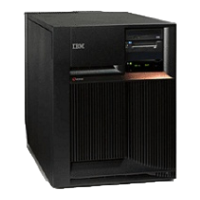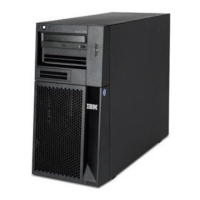v No: Reject the MCM/passthru module. Install another MCM/passthru (M21, M16, M11, M14), and go
to step 1 (See page 127).
7.
Inspect the interposer for shorts.
8. Are there any shorts visible?
v Yes: Reject the MCM/passthru module and install another one (M21, M16, M11, M14), and go to
step 1 (See page 127).
v No: Reinstall the MCM/passthru, and go to step 1 (See page 127).
MCM installation shorts test, procedure 3
Are there any L3 cache modules to install?
v Yes: Remove the meter, and then follow the Testing L3 cache modules for a short circuit (See page
128) procedure.
v No: Remove the meter and test card, and return to the procedure that sent you here.
This
ends the procedure.
Test method 2: Testing L3 cache modules for a short circuit
Perform this test to ensure that a short circuit was not created when installing an L3 cache module. You
can use one of the following options during the L3-cache module replacement.
v Use the new capacitor book (part 44P2471) and a multimeter
v Use the MCM/L3 module short-circuit test tool (part 44P0209)
Testing L3 cache modules for a short circuit, procedure 1
Note: This procedure should only be performed by trained personnel. Ensure the UEPO switch is in the
Off position before performing this procedure.
1. Power down the system. See Power on/off the system and logical partitions.
2. Ensure the UEPO is off.
3. Disengage all DCAs from the CEC backplane.
4. Choose from the following options:
v If you are using the new capacitor book option: Install the Capacitor book in DCA location 6 (M38),
with no meter attached.
v If you are using the short-circuit test tool option: Install the test card in DCA location 6 (M38), with
no meter attached.
5. Wait one minute to allow any charge to dissipate.
6. Select the meter to be used for this test (only meters recorded in the Models 870 and 890 - Shorts
test qualified service meters and fail criteria table can be used). Use the most accurate meter
available.
7. Record the meter that will be used.
8. Record the fail criteria for the meter being used.
9. Calibrate the meter by performing the following:
Note: Do not install the meter in the card at this time.
a. Set the meter to the range defined in the table.
b. Power the meter off and on.
c. Short the meter leads together.
d. Record the meter reading. Call this resistance ″Meter Lead Resistance″ (MLR).
10. Are there L3 cache modules installed in the system?
v Yes: Continue with L3 cache testing, procedure 2 (See page 129).
128 Hardware (Remove and Replace; Part Locations and Listings)
